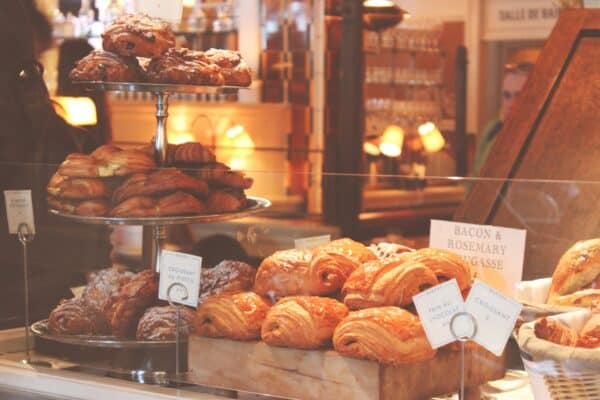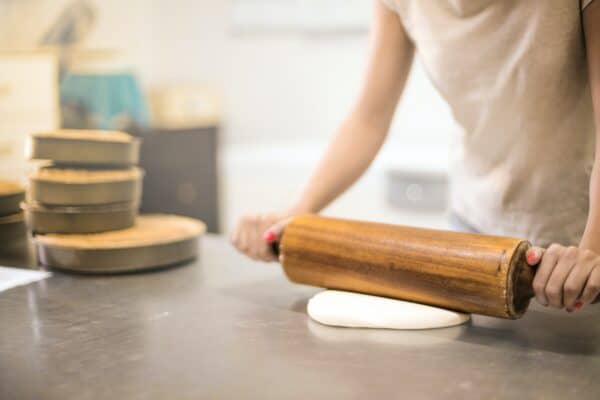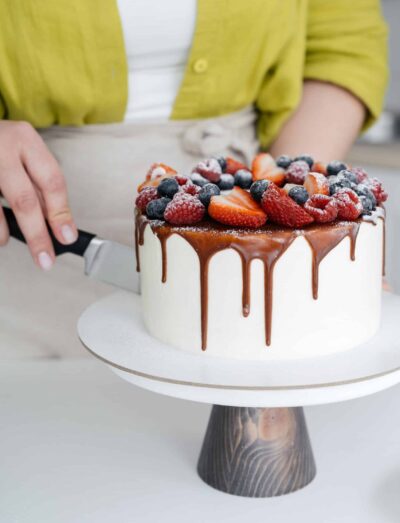
Every country in the world has their own version of a bakery, usually featuring coffee, tea, and baked goods native to the region. In fact, the U.S. alone is home to almost 9,000 bakery businesses.
One of the reasons for their popularity is that bakeries vary so much in terms of the goods they offer. Similarly, the price of products varies from cookies and coffee that cost a few dollars up to custom cakes priced at several hundred or even thousands of dollars.
Entrepreneurs should remember that there are so many opportunities for opening a new bakery. Whether you want to open a small pastry shop next to a subway station or a large-scale bread operation with multiple kitchens and national distribution, you have options.
But like any other business, operators must be strategic with their pricing and selection. Read on for a detailed guide on how to price baked goods.
Pricing For Baked Goods: Who Is Your Audience?
Like selling any products at your store front, you must determine what types of baked goods you offer based on your niche clientele. Who is your target audience? Do you want to appeal to health-conscious crowd? Or do you want to specialize in unique donuts for tourists?
Of course, this in part depends on the location of your bakery, such as whether it is in a big city or small town. But it’s also worth considering more specifics, like if it’s next to a gym, beach, or major train station. Taking this into consideration, as well your local competition, will give you a better idea of what kind of bakery menu you should design. Then, once you know your merchandise, you can begin working on pricing specific items.
Figure Out The Costs Of Baking Each Of Your Goods
You can’t really price your items until you calculate all of the costs associated with making those items in the first place. These bakery costs include both the direct expenses of making a baked good as well as indirect costs associated with running your business.
Direct Cost of Goods Sold
The cost of goods sold (COGS) refers to the direct expenses incurred with producing a specific product. For example, for a chocolate chip cookie this would include all of the flour, butter, milk, chocolate chips, and whatever other materials you put into your recipe. It would also include the time and labor spent making those cookies, either by you or your employees.
Depending on where you live and the quality of the materials you use, these costs can vary greatly. Take the example of California vs West Virginia. California’s minimum wage is nearly double that of West Virginia. As such, the higher labor costs in California must be reflected in your prices.
Similarly, if you use organic chocolate chips instead the cheapest chocolate available, your cost of goods sold will likely be noticeably higher.
All of these factors need to be calculated when determining the optimal pricing strategy for your item. Again, your ingredients, products, and price points need to make sense for your target audience.
Indirect Costs Associated With Bakeries
Next, add up all of the overhead costs of running your business as a whole. After all, before you ever turn a profit, you will need to account for all of these expenses. These include anything that helps keep your business running:
- Bakery Business Insurance
- Utilities, like electricity, gas, water
- Rent or mortgage
- Loan payments for financing
- Machinery leasing fees
- Any software leasing (SaaS)

What Is A Good Net Profit Margin For Bakeries?
A well-run and successful bakery can certainly be profitable. One of the factors that help determine this profitability is your margins. Your net profit margin is calculated with the following formula:
(total revenue – total costs) / total revenue
Most bakeries should set a goal to reach a net profit margin of 20%. Around 10% would be average. Anything under would that be slipping into low revenue.
Remember though, your net profit margin accounts for all of your expenses, not just the COGS for your bakery items. As such, you will need to charge a higher percentage margin on your COGS for your baked goods in order to cover the rest of your expenses and break a decent profit.
Bakery Merchandising and Pricing
Try to design a bakery system that generates enough money to pay your expenses, offer competitive rates to employees, and pay yourself a salary, while also providing reasonably priced goods to your clientele. This will require price adjustments for many items on your bakery menu. Being flexible with pricing and merchandising, while responding to customer feedback, will help ensure success.
Remember though, don’t undersell yourself. Let’s say you come up with an original baked good that people love, or you’ve become an expert at baking almond croissants. Feel free to experiment with pricing a bit more aggressively to see how it affects your sales. If your quality is that much better and the demand is that much higher, people will certainly pay more.
How To Price Baked Goods Strategically: Use Sales Data To Make Adjustments
You can make use of your sales data to see what products have been moving quickly and which others aren’t performing so well. From there, you can try adjusting your price levels and swap out items accordingly.
In fact, you should always keep revisiting your goods to make sure they have an adequate profit margin. Part of that process is analyzing each item in your inventory to monitor whether it is moving off the shelf. In conjunction with real customer feedback, your point of sale reporting and analytics can provide plenty of insight into product performance, margins, and price strategy.
Use Strategic Sales Techniques
Bakeries can utilize many of the same merchandising and sales techniques that any other retail vertical uses. Cross-selling croissants or muffins with coffee or tea can increase check averages considerably.
In addition, offering bundled deals for buying more items, like boxes of cookies or sampler gift packages, helps you move your products faster and gives your revenue a boost. It’s a win-win for the shopper and the owner.
Offer Custom Baked Goods

One way to really raise your profit margins is with custom baking. Offer your services for weddings, birthday parties, graduations, etc. With these types of celebrations, clients will want enhanced customization from the flavors and toppings to the decorations and more.
Since you’ll be offering a service that’s hard to find, requires special skill, and takes more time, you can experiment with raising your prices. Nevertheless, the more you work at your craft, the more efficient and practiced you will be. You can turn these difficult projects into your most lucrative services. Plus, pre-ordered baked goods help immensely with profit margins. There’s no guesswork on inventory ordering and therefore less waste. In the end, this means better margins.
KORONA POS For Bakeries
We just updated KORONA Studio, our back office cloud interface, to make preorder scheduling even easier for our bakery clientele. In addition, we offer extensive reporting and analytics for bakers to make sense of all of their products, prices, and margins.
Our POS is integration ready, whether you want to implement a robust loyalty program, or seamlessly migrate your sales data to QuickBooks Online. We also offer full eCommerce buildout if you want to sell your baked goods online. Give us a call today to learn more about KORONA POS and how it can take your bakery to the next level!
Frequently Asked Questions About Pricing Baked Goods
Determine the price of your baked goods by adding up both direct and indirect costs associated with making that product plus the amount of profit you want to make. Remember that you need to account for all of your overheard, including utilities, rent, paying staff, and more. Shoot for a net profit margin of around 20% as a goal.
Anything below 30% would be an ideal food cost for a bakery. Many restaurants operate a bit higher. But getting your food costs into around 25% would ensure higher profitability to sustain a healthy business.
Successful bakeries can be highly profitable. Just like every business, you must be strategic with your target audience. Create items that you can price at amounts that make sense for your bottom line while also appealing to customers. Custom cake design and specialty items will also increase your profitability considerably.













